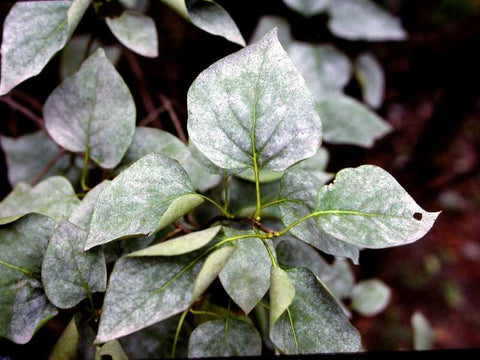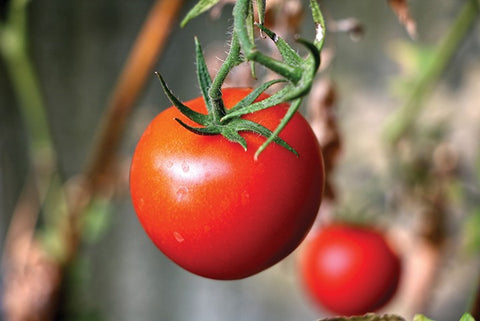By Cindy King, CPH, The Mill
Powdery mildew is a fungal disease that affects a wide variety of plants. Different species attack different groups of plants. In gardens, plant groups include cucurbits such as squash, pumpkins, cucumbers, melons, nightshades like tomatoes, eggplants, peppers, legumes including beans and peas and ornamentals like roses, gardenias, hydrangeas, phlox and other annual and perennial plants.
Powdery mildew spores spread with the wind, but if you’ve had powdery mildew occur in the past, new outbreaks may also come from dormant spores in old vegetative material or weeds nearby. The fungus forms a layer of spores across the top of the leaves. Unless the infection is controlled, it not only slows the growth but will reduce fruit yield and quality. If left unchecked, plants become unthrifty and susceptible to other conditions which can eventually kill the plant.
Powdery mildew thrives in warm (60-80°F), dry climates, that have a high enough relative humidity around the plant to spread. Rainy, cooler areas are not ideal and it does not thrive well in temperatures over 90°F. It can affect plants in shady areas more than in direct sun.
Identifying Powdery Mildew:
- Plants infected with powdery mildew look as if they have been dusted with flour.
- Powdery mildew usually starts off as circular, powdery white spots, which can appear on leaves, stems, and sometimes fruit.
- Powdery mildew usually covers the upper part of the leaves, but may grow on the undersides as well.
- Young foliage is most susceptible to damage. Leaves turn yellow and dry out.
- The fungus might cause some leaves to twist, break, or become disfigured.
- The white spots of powdery mildew will spread to cover most of the leaves or affected areas.
- The leaves, buds, and growing tips will become disfigured as well. These symptoms usually appear late in the growing season.
Prevention and Control:
Prevent by spraying infected plants with protectant fungicides. Effective organic fungicides for treating powdery mildew include Neem Oil, sulfur, lime-sulfur, and potassium bicarbonate. These are most effective when used prior to infection or when you first see signs of the disease.
Treatment is more difficult once there is a heavy infection. Remove all affected plant parts and dispose by either by throwing them in the trash or by burning. Do not compost any infected plant, as the disease can still be spread by the wind and persist in the composted materials. Use a fungicidal spray like Fung-onil or Draconil to control the infestation. Follow label directions to reapply for effective control and ensure air circulation can occur around the plant.
























